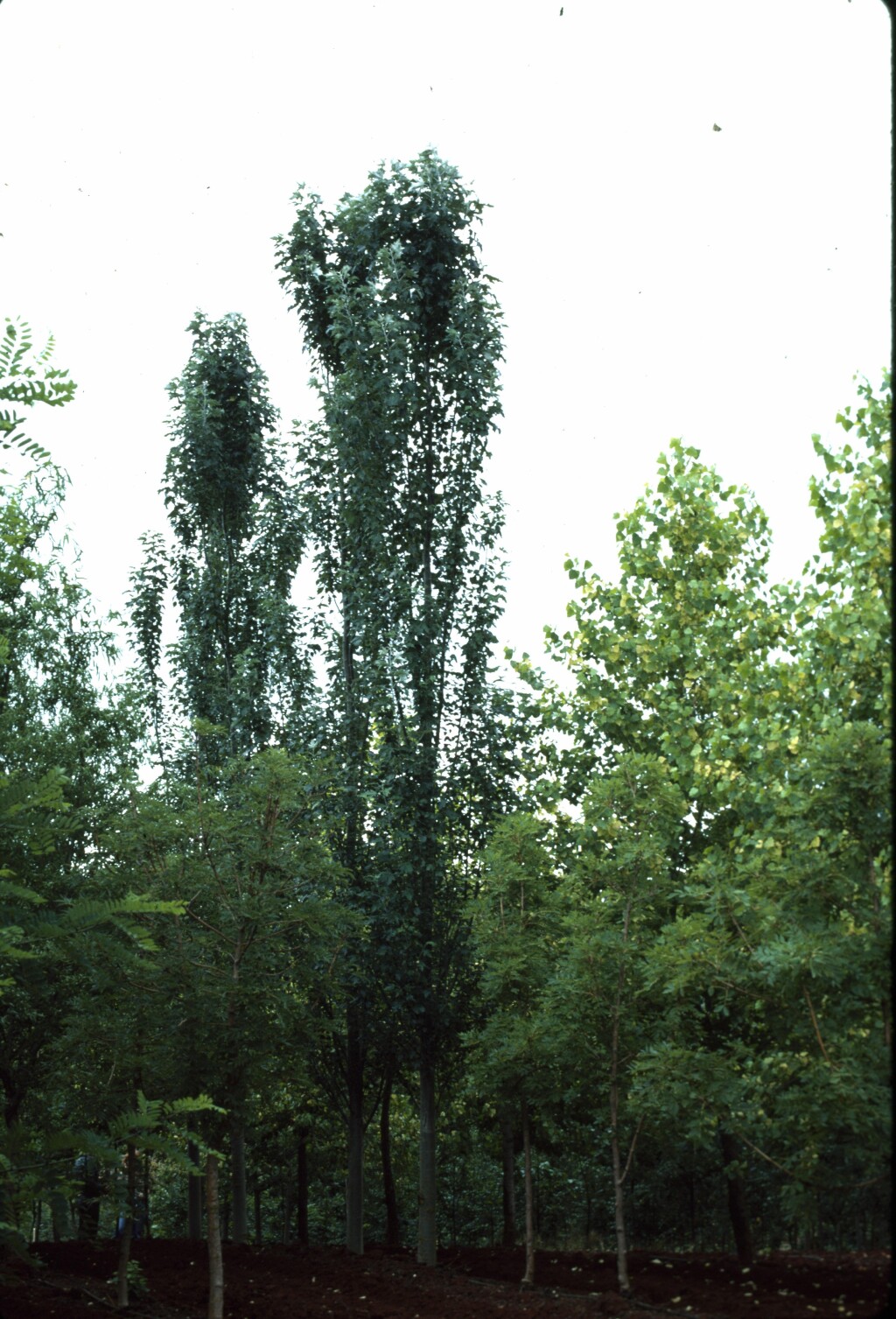Populus alba
L. White PoplarTree to c. 20 m high; bark greyish-white, becoming rough on older trunks; young shoots densely white-tomentose. Buds ovoid, densely white-tomentose. Leaves of 2 kinds; those toward the apex of long-shoots usually deeply palmatifid (maple-like), 3–12 cm long and wide, ultimately glabrous and dark green above, remaining densely white-tomentose below; leaves of short-shoots ovate, irregularly and bluntly sinuate-lobed, 3–6(–8) cm long and wide, glabrous above, variably white-tomentose to greyish-glabrescent below. Catkins appearing before leaves; catkin-scales entire, ovate to obovate. Male catkins 4–7 cm long; stamens 5–10, anthers purple. Female catkins 3–5 cm long (to c. 8 cm in fruit); with stigmas bilobed from the base (appearing as a 4-rayed stigma). Capsule c. 3 mm long, dehiscing via 2 valves. Flowers ? Aug.–Sep.
VVP, VRiv, GipP, OtP, WaP, Gold, CVU, DunT, EGL, HSF, HNF, OtR, Strz, VAlp. Also naturalised WA, Qld, NSW. Native to central and southeastern Europe to central Asia. Recorded in Victoria from roadsides and riparian forests near e.g. Ballarat, Ferntree Gully and Orbost.
Australian plants appear to be all female, this being the common condition also in Britain (Meikle 1984).
Plants may be easily confused with P. ×canescens (a fertile hybrid derived from P. alba and P. tremula L. (Aspen)). See note under that species. Populus alba 'Pyramidalis', a non-suckering cultivar of narrower form, and probably several other cultivars, are also grown as ornamentals in Victoria.
Walsh, N.G. (1996). Populus. In: Walsh, N.G.; Entwisle, T.J., Flora of Victoria Vol. 3, Dicotyledons Winteraceae to Myrtaceae, pp. 385–386. Inkata Press, Melbourne.
 Spinning
Spinning




